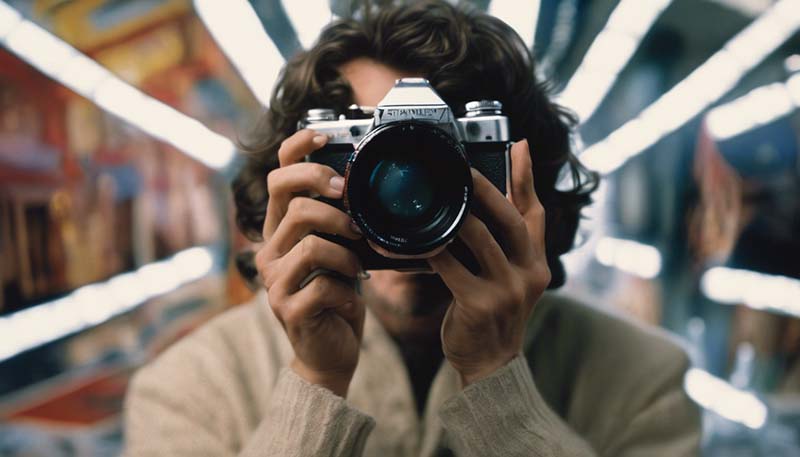The Artistry of Stanley Kubrick: A Cinematic Exploration
The Artistry of Stanley Kubrick: A Cinematic Exploration
Introduction
Stanley Kubrick, an American film director, producer, screenwriter, and photographer, is widely regarded as one of the most influential and innovative filmmakers in the history of cinema. His meticulous attention to detail, unique visual style, and thought-provoking narratives have left an indelible mark on the film industry. This article aims to explore the artistry of Stanley Kubrick through an in-depth analysis of his cinematic techniques, thematic concerns, and the impact of his work on the world of film.
Early Life and Career
Born on July 26, 1928, in New York City, Kubrick developed an interest in photography from a young age. He worked as a photographer for Look magazine before transitioning to filmmaking. His directorial debut came with the short film Day of the Fight (1951), which he also photographed and edited. His first feature film, Fear and Desire (1953), was a modest success, but it was his third feature, The Killing (1956), that marked the beginning of his journey as a visionary filmmaker.
Advertisement
Cinematic Techniques
Kubrick's films are characterized by a distinct visual style that combines meticulous composition, innovative camera work, and a meticulous attention to detail. Some of his most notable cinematic techniques include:
1. One-Point Perspective
Kubrick often used one-point perspective to create a sense of depth and symmetry in his compositions. This technique is evident in films such as Barry Lyndon (1975) and The Shining (1980), where the use of long, straight corridors and symmetrical compositions creates a sense of order and control.
2. Steadicam
Kubrick was one of the first directors to use the Steadicam, a camera stabilization system that allows for smooth and fluid movement. The iconic tracking shot in 2001: A Space Odyssey (1968) is a prime example of how Kubrick used this technology to create a sense of fluidity and continuity in his films.
3. Lighting and Color
Kubrick's use of lighting and color was often symbolic and expressive. In A Clockwork Orange (1971), for example, the use of warm, vibrant colors contrasts with the film's dark and violent themes, creating a sense of unease and tension.
4. Long Takes
Kubrick was known for his use of long takes, which allowed for uninterrupted sequences of action and dialogue. This technique is particularly effective in Barry Lyndon, where long takes are used to create a sense of time passing and to immerse the audience in the film's 18th-century setting.
Thematic Concerns
Throughout his career, Kubrick explored a range of themes that reflect his unique worldview and philosophical interests. Some of his most prominent thematic concerns include:
1. Humanity's Place in the Universe
In 2001: A Space Odyssey, Kubrick explores the idea of human evolution and our place in the cosmos. The film's enigmatic ending, which features the iconic "Star Gate" sequence, has been interpreted as a representation of human transcendence and the possibility of life beyond our understanding.
2. The Human Condition
Many of Kubrick's films, such as Dr. Strangelove or: How I Learned to Stop Worrying and Love the Bomb (1964) and A Clockwork Orange, examine the darker aspects of human nature, including our capacity for violence, our susceptibility to manipulation, and our struggle for power and control.

3. Technology and Progress
Kubrick's films often question the relationship between technology and human progress. In 2001: A Space Odyssey, the HAL 9000 computer represents the potential dangers of artificial intelligence, while in A Clockwork Orange, the Ludovico Technique, a method of aversion therapy, raises questions about the ethical implications of using technology to control human behavior.
4. Power and Control
In films like Barry Lyndon and Full Metal Jacket (1987), Kubrick explores the corrupting influence of power and the ways in which individuals and institutions seek to exert control over others.
Legacy and Impact
Stanley Kubrick's films have had a profound impact on the film industry and continue to be celebrated for their artistic and technical achievements. His work has influenced a generation of filmmakers, including Martin Scorsese, Ridley Scott, and Christopher Nolan, who have cited Kubrick as a major inspiration for their own films.
Kubrick's films have also been the subject of numerous academic studies and critical analyses, which have explored their complex themes, innovative techniques, and enduring cultural significance. His work has been recognized with numerous awards and honors, including four Academy Awards and several BAFTAs.
Stanley Kubrick's artistry and vision continue to inspire and challenge audiences around the world, ensuring that his films will remain an important part of the cinematic landscape for generations to come.